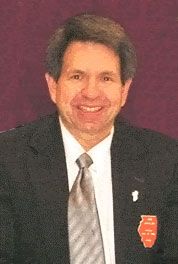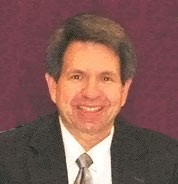By Ken Jakalski
 Since the mid-seventies, when I first began trying to extend the predictive ability of Russian coach Valentin Petrovksy’s fly sixty projections for Olympic sprinter Valery Borzov to my high school athletes, I’ve been pursuing an easy method for timing segments gates of short sprint distances. For several years, my poor man’s version worked fine. That involved putting hurdles on either side of the lane an athlete would be running in, taping a piece of finish yard from one hurdle gate to the others, and then draping a red bandana over the finish string. When the athlete ran between the two hurdles and broke the finish string, the red bandana would flutter, and that when I would either turn on my stopwatch as an athlete entered the testing zone, then stop it when the next fluttering bandana signaled the end of the zone.
Since the mid-seventies, when I first began trying to extend the predictive ability of Russian coach Valentin Petrovksy’s fly sixty projections for Olympic sprinter Valery Borzov to my high school athletes, I’ve been pursuing an easy method for timing segments gates of short sprint distances. For several years, my poor man’s version worked fine. That involved putting hurdles on either side of the lane an athlete would be running in, taping a piece of finish yard from one hurdle gate to the others, and then draping a red bandana over the finish string. When the athlete ran between the two hurdles and broke the finish string, the red bandana would flutter, and that when I would either turn on my stopwatch as an athlete entered the testing zone, then stop it when the next fluttering bandana signaled the end of the zone.
However, a timing gate company out of Utah changed all that for me. At a fairly reasonable price, I could get two sets of infrared sensors and a compact hand-held watch that recorded those fly-ins times effortlessly and accurately. The system was ideal because it was portable and wireless. Two sets of transmitters, four tripods, the antennas, and stopwatch could easily fit in small red and black bag not much larger than a fanny pack.
I’ve used Brower equipment for many years. I have two separate systems, each with two sets of sensors and one hand held watch. Do I have issues with Brower? I’ve never had problems with catching split time accurately. However, it seemed as if I had to replace at least one of the transmitter’s back plates because the on/off bubble would crack and fall apart. And I ended up replacing at least one or more of the tripods every couple of years because one of the telescoping legs would snap off. The tripods seemed ideal because they were relatively small and easy to set up, but they were pretty flimsy, and on windy days the transmitters would easily blow over without some ingenious method of adding a weighted collar just below each tripod’s head.
Nevertheless, Brower’s service was excellent, and the staff personable and helpful. Brower even had a wireless small clock that could display split times, and that was another cool feature.
Several years back, I took what was a big step up in timing gate quality when I purchased a set of MicroGate Polifemo transmitters, and a large MicroTab clock display clock, which worked wirelessly with the Polifemos. I even added a pretty elaborate RaceTime2 hand held unit. None of this equipment was cheap. The Polifemos at the time were $750 per transmitter, the hand held unit was $1,000, and the MicroTab overhead clock was $5,000.
Between two sets of Brower systems, and the top of the line MicroGate products, I thought I had extended wireless gate timing about as far as I could. Were there drawbacks to this technology? Any infrared sensor is triggered when something “breaks” the beam, and that means only one runner can go through the recording zone at a time. And, extending out an arm to break the beam could also give in inaccurate time. Yes, I’ve had runners try that, although the frequency is far less than one would think.
Gate timing became a very critical issue when I began using a spreadsheet version of the Bundle/Weyand ASR algorithm for individualizing high speed sprint segment workouts for my high school athletes. And as I began promoting explaining the concept of using the ASR regression equation for determining specific short sprint goals for each athlete, the importance of timing gates increased dramatically.
A few years back a colleague of mine from England mentioned a Swiss company called Freelap, which had begun marketing in the US a segment timing system for everything from skiing to motocross, and the system did not use infrared technology.
I was immediately attracted by the simplicity of the system. The transmitters were nothing more than candle sized sticks on a small black base that you simply pressed and twisted to activate. And the only other component of the system was the wristwatch, capable of storing the data and then uploading the times to a computer.
Freelap is based on electromagnetism. The watch starts and splits/stops when an athlete enters and exits a timing zone. The watches are easy to use, and there are no complicated settings that require the user to negotiate through a series of button presses and steps.
All I need to do is open the Freelap case, set the sensors at the timing zone points, and hand a watch to the runner. The watch can be worn on the wrist or, for increased accuracy, worn around the waste by way of a special belt that holds the watch in place like buckle.
Did I like the system the first time I used it? Yes. I now have eight watches and nine transmitters. I can get gate times on eight sprinters running all at the same time. Each watch has a neat little number band, and each numbered watch is assigned to a specific runner. That athlete can easily read his segment times for each run, and at the end of the workout, I can take those watches and upload the data for each athlete in a separate spreadsheet.
ASR workouts are now completed far more quickly, and equipment maintenance and set up time is minimal. Are the transmitters and watches dependable? I have had no issues with missed times, other than those resulting from human error, such as not turning on a transmitter.
What about product failure? Freelap service is excellent, and issues I have had, mostly with the first generation of watches, were resolved quickly. I’ve had no issues with the current watches or transmitters I am using. In fact, I became convinced of the product quality when I inadvertently left one of the transmitters out on the track for two days, one of those days being a heavy rainfall. When I returned to the track, the transmitter, which had been left on for forty-eight hours, still worked without a problem.
Please share this article so others may benefit.
[mashshare]

